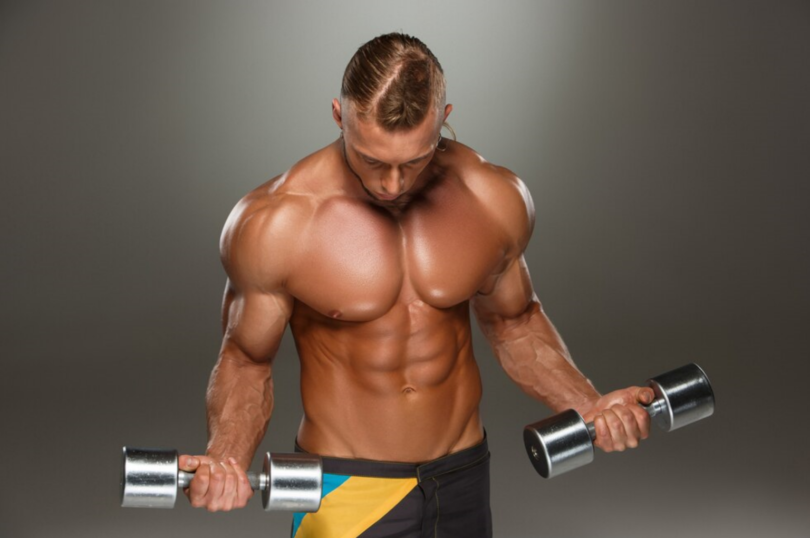Introduction to Bodyweight Training and its Benefits
As fitness enthusiasts, we are always in search of effective workout routines that can help us achieve our desired physique. One such training method that has gained immense popularity in recent years is bodyweight training. Unlike traditional weightlifting, bodyweight training utilizes the resistance of your own body to build strength and muscle. Not only does it offer convenience and flexibility, but it also requires minimal equipment, making it accessible to everyone.
Understanding the Importance of Triceps in Overall Arm Development
When it comes to arm development, many people tend to focus solely on their biceps. However, neglecting the triceps can lead to an imbalanced arm appearance. The triceps, located at the back of the upper arm, make up a significant portion of its overall size. By working on your triceps, you not only enhance the aesthetic appeal of your arms but also improve functional strength for activities requiring pushing movements.
The Science Behind Building Big Triceps with Minimal Equipment
Contrary to popular belief, you don’t need fancy gym equipment or heavy weights to build big triceps. Bodyweight exercises can be just as effective, if not more, in targeting and sculpting your triceps. The science behind muscle growth, known as hypertrophy, involves subjecting the muscles to tension, which leads to microscopic tears in the muscle fibers. As these fibers repair, they become thicker and stronger. Bodyweight exercises, when performed correctly and with proper intensity, create the necessary tension to stimulate triceps growth.
Key Exercises for Sculpting Big Triceps at Home
Now that we understand the science behind building big triceps, let’s dive into the key exercises that will help us achieve our goal. These exercises can be performed at home, without the need for any equipment. The first exercise is the classic triceps push-up. Begin in a plank position, with your hands slightly wider than shoulder-width apart. Lower your body down by bending your elbows, keeping them close to your body. Push back up to the starting position, focusing on squeezing your triceps at the top of the movement.
Another effective exercise is the triceps dip. Find a stable surface, such as a chair or bench, and place your hands on the edge with your fingers facing forward. Extend your legs out in front of you, and slowly lower your body down by bending your elbows. Once your upper arms are parallel to the floor, push yourself back up to the starting position. This exercise specifically targets the triceps, providing an intense contraction.
Proper Form and Technique for Maximum Triceps Activation
To ensure maximum triceps activation and prevent injury, it is crucial to maintain proper form and technique during your bodyweight triceps exercises. When performing triceps push-ups, keep your core engaged and your body in a straight line from head to toe. Avoid arching or sagging your lower back. As you lower yourself down, make sure your elbows are pointing backward, not outward. This helps to target the triceps more effectively.
During triceps dips, focus on keeping your shoulders down and back, away from your ears. This helps to engage the triceps and prevents unnecessary strain on the shoulders. Avoid locking your elbows at the top of the movement, as this can lead to joint discomfort. Instead, maintain a slight bend in your elbows throughout the exercise.
Designing an Effective Bodyweight Triceps Workout Routine
Now that we have covered the key exercises and proper form, it’s time to design an effective bodyweight triceps workout routine. The following routine can be performed two to three times a week, allowing for adequate rest and recovery between sessions.
- Triceps Push-Ups: 3 sets of 12-15 reps
- Triceps Dips: 3 sets of 10-12 reps
- Diamond Push-Ups: 3 sets of 10-12 reps
- Close Grip Push-Ups: 3 sets of 12-15 reps
- Bodyweight Skull Crushers: 3 sets of 10-12 reps
Remember to warm up before each workout and cool down afterward. Focus on maintaining proper form and gradually increasing the intensity and difficulty of the exercises as you progress.
Tips and Tricks for Accelerating Triceps Growth
While consistency and proper form are key to triceps growth, there are a few tips and tricks that can help accelerate your progress. Firstly, ensure that you are providing your muscles with adequate rest and recovery time. Muscles grow during periods of rest, so avoid overtraining and allow at least 48 hours of recovery between triceps workouts.
Additionally, incorporating progressive overload into your routine can stimulate further muscle growth. This can be achieved by gradually increasing the number of repetitions, sets, or difficulty of the exercises over time. For example, you can start with incline push-ups and progress to full triceps push-ups as you get stronger.
The Role of Nutrition in Supporting Triceps Development
To maximize the results of your bodyweight triceps training, it is essential to fuel your body with proper nutrition. Consuming an adequate amount of protein is crucial for muscle repair and growth. Include lean protein sources such as chicken, fish, tofu, and beans in your diet.
Additionally, ensure you are consuming a balanced diet consisting of whole grains, fruits, vegetables, and healthy fats. Proper hydration is also important for muscle function and recovery. Aim to drink at least 8 glasses of water per day.
Avoiding Common Mistakes and Injuries While Training Triceps
As with any exercise routine, it is important to be mindful of common mistakes and potential injuries while training your triceps. One common mistake is using momentum to perform the exercises, rather than relying on the strength of your triceps. This reduces the effectiveness of the exercise and places unnecessary strain on other muscles.
Another mistake to avoid is neglecting proper warm-up and cool-down routines. Failing to warm up can increase the risk of muscle strains or pulls. Cooling down helps to lower your heart rate gradually and prevents blood from pooling in your muscles.







